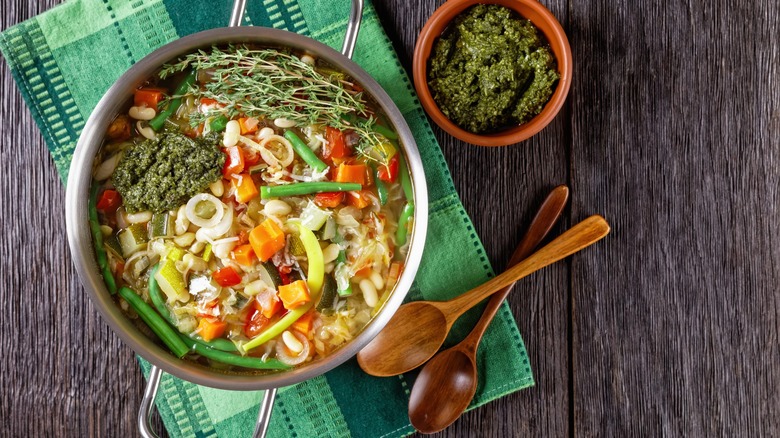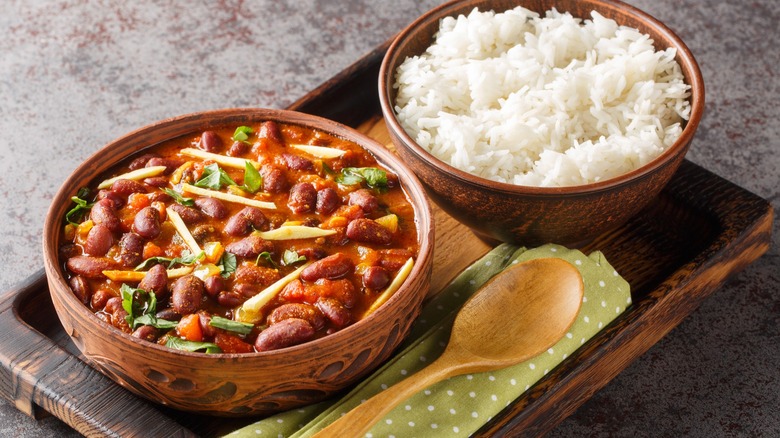When Cooking A Pot Of Beans, You Need Flavorful Aromatics
A pot of water, salt, and dried legumes looks deceiving in its simplicity, because beans can be deeply flavorful with some easy additions to your preparation method. You just need the help of aromatics, which are the dried spices, herbs, and vegetables we use to impart flavor, aroma, and nuance to other foods. Once you tap into this healthy way to create different flavor profiles with beans, there are a few tricks to keep in mind: Use what you have and keep your favorite spice blends on hand. A fun way to start is by choosing a cuisine from anywhere in the world, then pairing those herb and spice blends with whatever fresh aromatic vegetables you have in your fridge.
For Italian cuisine, think Romano beans — those slow-cooked Italian green beans — paired with fresh herbs like thyme and oregano, simmering in a broth with half an onion and a carrot that you need to use up. Onions, carrots, and celery are magical starting points, and the amounts you use don't have to be exact. A loose mirepoix made from a quarter of an onion, half a carrot, and half a stalk of celery will work wonders on any dried bean, along with garlic. Yes, a clove or five works. Up next: Add bundles of fresh herbs and dried spices to really amp up the flavor. You can tie up the herb part of the aromatics with cheesecloth or let them swim in the broth and remove them with tongs later.
Ideas and tips for adding aromatics to your beans
Some of the most popular blends of aromatics in the world are curries, which are a no-brainer when it comes to beans. This recipe for instant pot rajma, a kidney-bean curry, can also be cooked on top of the stove and combines fresh ginger with garam masala, chili powder, and a host of other yummy spices that will transport you straight to India. You could also use pinto beans or cannellini beans.
After choosing a loose version of mirepoix, try adding a mixture of dried spices like a homemade za'atar blend. This Middle Eastern spice with citrusy sumac pairs perfectly with a pot of garbanzo beans or white beans. Cilantro lovers, Cuban black beans are for you. They are a classic example of using aromatics to make a pot of beans outrageously good. This recipe calls for your aromatics to be diced and cooked with a fat, and that's because the fat makes the beans creamier, if that is what you are going for.
Always start with salt. You don't have to soak your beans, but doing so will reduce your cook time, and it's your first chance to impart flavor by salting your soaking water (which is called brining). A tablespoon or 2 of salt will do. The salt softens the beans and helps them to absorb your aromatics, too. You also want to salt your cooking water sparingly. The combination of brining during soaking and salting the water during cooking improves the flavor of the aromatics and helps the beans cook evenly.

